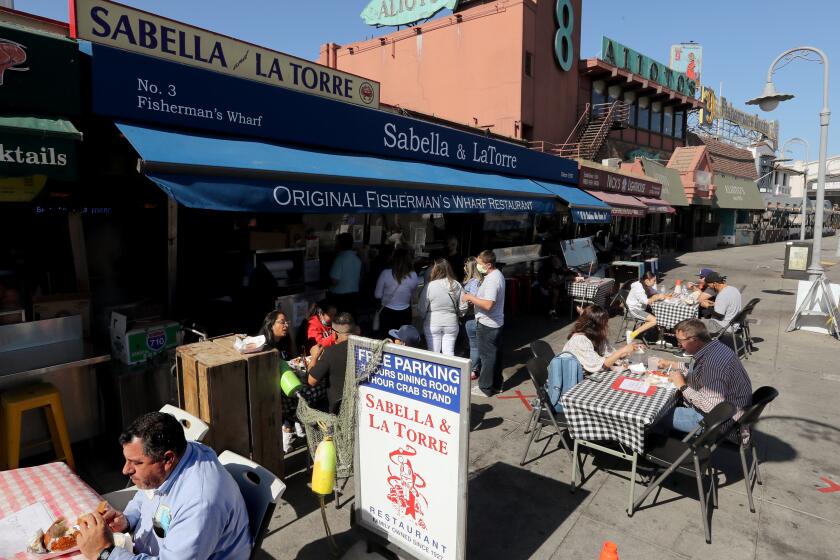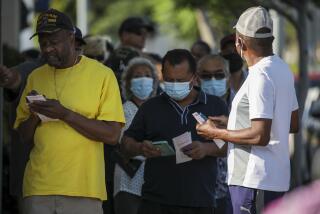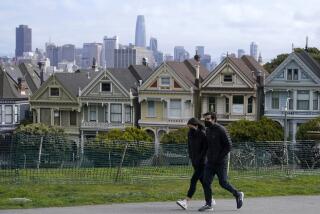New restrictions in San Francisco Bay Area after ‘explosion’ of new coronavirus cases

- Share via
SAN FRANCISCO — San Francisco, now suffering from a “major surge” of the coronavirus, moved from the least restrictive tier for reopening to the state’s second-most prohibitive zone after many weeks of managing to keep the virus tamped down.
The deteriorating picture in San Francisco reflected worsening health conditions throughout the Bay Area, where rising infections have forced every county into a more restrictive tier.
During an online news confidence, San Francisco Mayor London Breed and Public Health Director Grant Colfax pleaded with residents to avoid travel and gathering outside their households on Thanksgiving.
They said the state has moved the city from the yellow tier, which indicates virus transmission is minimal, to the red zone for substantial spread.
“What we are asking people to do is sacrifice,” Breed said.
Just three weeks ago, San Francisco was being lauded by infectious disease experts for keeping its coronavirus numbers low, despite being the second-densest city in the United States, behind New York.
But though the city made “incredible gains” with its cautious reopening and expansive testing during the last several months, Breed said, those gains will now be in jeopardy if residents don’t follow health rules.
The latest maps and charts on the spread of COVID-19 in California.
Colfax said the explosion of cases in San Francisco reflected the worsening pandemic in the state and throughout the nation.
Although the city’s infection rate remains lower than the national average, “there is no reason for us to believe we couldn’t get up to that average,” Colfax said.
He said the virus is spreading much more rapidly than it did during a summer peak. It took 29 days a month ago to move from 11,000 to 12,000 cases, 18 days to move up to 13,000 and just 12 days to reach 14,000, he said.
“Here is San Francisco we are seeing an explosion of new cases throughout the city,” Colfax said.
San Francisco is halting indoor dining again, reducing capacity at gyms and theaters, but is allowing many schools to remain open -- for now.
As a result of the surge, capacity at indoor gyms will be cut from 25% to 10% and offices for nonessential workers will be closed.
The city ended indoor dining on Saturday. Breed said that forced restaurants to lay off staff and resulted in food supplies going to waste. More than 300,000 residents have filed for unemployment since the start of the pandemic, she said.
“We have been a leader in combatting this virus,” Breed said. “We should be so proud that we have done an incredible job. And now I am asking for more, and I know it is hard. I know it is hard every single day.”
The counties surrounding San Francisco also reported bleaker conditions on Monday.
Santa Clara, Alameda, Contra Costa and Napa counties were placed in the purple tier, the most restrictive level indicating widespread transmission of the virus. San Mateo and Marin counties, which were in the orange tier on Nov. 10 for moderate virus spread, moved to the more restrictive red level.
More to Read
Sign up for Essential California
The most important California stories and recommendations in your inbox every morning.
You may occasionally receive promotional content from the Los Angeles Times.













